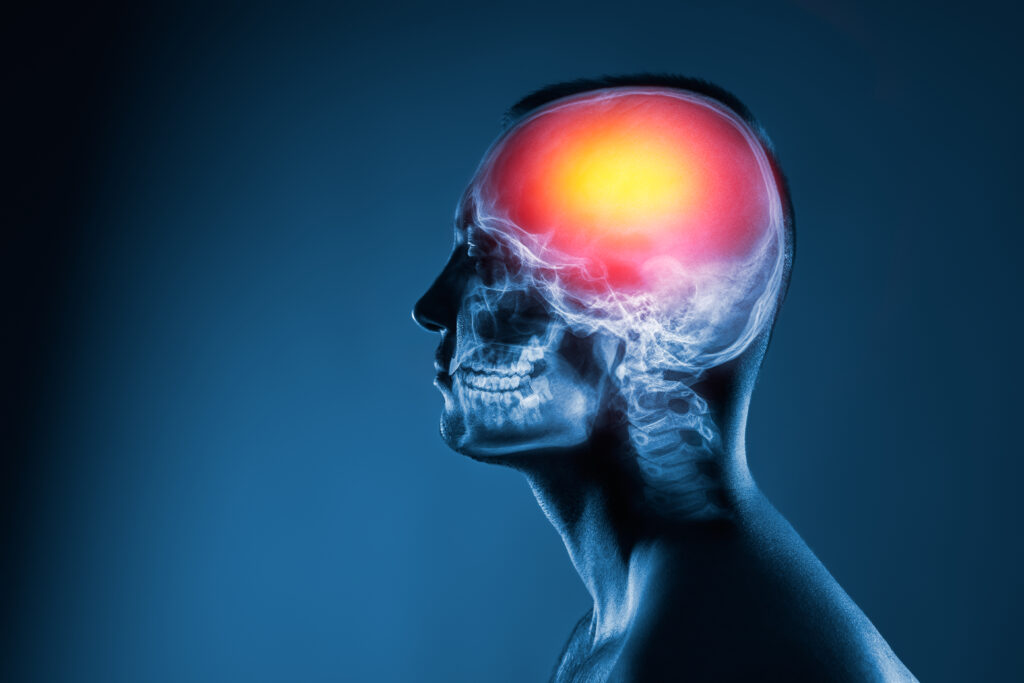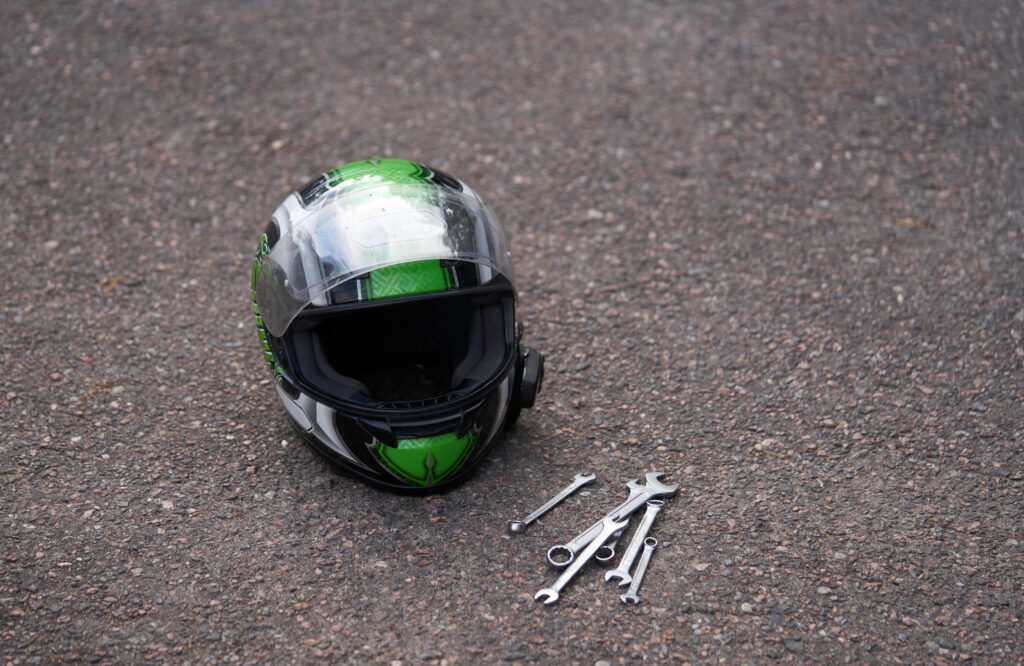Helmets play a vital role in protecting our heads from traumatic injuries. They are designed to absorb and distribute the force of an impact, reducing the risk of severe brain trauma. Helmet use is prevalent in various activities to ensure the safety of individuals, from motorcycling to bicycling, construction work, and sports.
Head injuries can be incredibly scary and have long-lasting effects on a person’s life. As such, it’s only natural to wonder if wearing helmets can truly prevent them. The good news is that multiple studies have shown that helmets effectively reduce the risk of head injury. Whether worn while biking, skateboarding, or participating in any other activity where there is a risk of falling, helmets provide a critical layer of protection for our vulnerable heads.
However, even if you or someone you love suffered a head injury and weren’t wearing a helmet, you still have legal rights. Don’t let a lack of a helmet deter you from exploring your legal options. Instead, contact a Fort Lauderdale personal injury attorney near you. They can help guide you through the process and ensure you receive the compensation you may be entitled to.
Reach Out Today!
How Helmets Are Designed to Prevent Head Injuries
Helmets are meticulously designed to provide maximum protection to the head. They consist of three main components: an outer shell, an impact-absorbing liner, and comfort padding. The outer shell is made of a hard material, such as fiberglass or polycarbonate, and provides the first line of defense against direct impact. The impact-absorbing liner, typically made of expanded polystyrene (EPS), is designed to absorb and dissipate the force of the impact. Finally, comfort padding ensures a snug fit and enhances the wearer’s comfort during prolonged use.

The design of helmets aims to reduce the impact force and distribute energy, thus minimizing brain trauma. During an accident or fall, the helmet absorbs most of the impact, reducing the likelihood of severe injury.
Different types of helmets serve different purposes. Motorcycle helmets are specifically designed to protect motorcyclists from head injuries in the event of a crash. Bicycle helmets are lightweight and designed to provide protection during falls or collisions while riding. Sports helmets, such as those used in football or hockey, are tailored to meet the specific safety requirements of each sport. Workplace helmets, on the other hand, are designed to protect workers in high-risk industries, such as construction or manufacturing.
Scientific studies and statistics have consistently shown the effectiveness of helmets in reducing traumatic brain injuries (TBIs). Research conducted by the Centers for Disease Control and Prevention (CDC) has shown that motorcycle helmets reduce the risk of head injury by 69 percent and the risk of death by 42 percent. Similarly, bicycle helmets have been shown to reduce the risk of head injury by up to 85 percent.
The Limitations of Helmets in Preventing Head Injuries
While helmets provide a significant level of protection, they do not eliminate the risk of head injuries. Several factors, including proper fit, material integrity, and impact severity, can affect a helmet’s effectiveness.
A helmet must fit properly to provide adequate protection. It should sit snugly on the head, covering the forehead and the sides without obstructing vision or impeding movement. Inadequate fit can reduce the helmet’s ability to effectively absorb and distribute impact forces.
The integrity of the helmet’s materials is paramount. If a helmet is damaged, it may be unable to perform its protective function adequately. Therefore, it is essential to regularly inspect and replace helmets that show signs of wear and tear or have been involved in a significant impact.
Contrary to popular belief, wearing a helmet does not make a person immune to concussions. While helmets do reduce the risk of concussions, they cannot completely eliminate the possibility. Concussions can still occur due to rotational forces on the brain, which can happen even if the helmet absorbs the impact. It is important to use helmets in conjunction with other safety measures, such as practicing safe riding behavior and wearing appropriate protective gear.
Common Head Injuries Despite Helmet Use
Despite the use of helmets, specific head injuries can still occur. Some of the most common injuries include concussions, skull fractures, diffuse axonal injury (DAI), brain bleeding, and swelling.
Concussions are minor traumatic brain injuries that can occur even with the use of a helmet. They can result from the brain moving rapidly within the skull, causing temporary disruption of normal brain function. While helmets can reduce the severity of concussions, they cannot completely prevent them.
Skull fractures can still occur in high-impact crashes, even with the protection of a helmet. Although a helmet may absorb a significant amount of the impact force, extreme forces can still lead to fractures in the skull.

Diffuse axonal injury (DAI) is a severe type of brain injury that occurs due to rapid acceleration or deceleration of the brain. This type of injury involves tearing nerve fibers throughout the brain and can result in long-term cognitive and physical issues. Unfortunately, helmets are not explicitly designed to prevent DAI.
Brain bleeding and swelling are serious injuries that can occur due to the damage caused by an impact. While helmets provide a layer of protection, they cannot entirely prevent internal damage to the brain.
These injuries can have long-term consequences, leading to disabilities, cognitive issues, and emotional distress. In such cases, seeking legal recourse may be necessary to ensure proper compensation and support for the victims.
Helmet Laws
Helmet laws vary from state to state. In the United States, helmet laws primarily focus on motorcycle and bicycle helmets. Different states have different requirements, with some mandating helmet use for all motorcyclists and bicyclists, while others have specific age limits or requirements.
Employers also have a responsibility to enforce helmet use in hazardous workplaces. Construction sites, manufacturing jobs, and other high-risk industries often require employees to wear helmets as part of their safety protocols. Failure to enforce helmet use can lead to legal repercussions for the employer in the event of a head injury.
What if You Weren’t Wearing a Helmet?
Even if you weren’t wearing a helmet at the time of an injury accident, you may still have a valid personal injury claim. Liability for an accident depends on who was at fault, not whether you were wearing protective gear. If another party—such as a reckless driver, negligent property owner, or defective product manufacturer—caused your injuries, you have the right to seek compensation for your damages.
While insurance companies or defendants may argue that not wearing a helmet contributed to your injuries, this does not eliminate your right to recover damages. If your injuries extend beyond the helmet’s protection—such as spinal cord damage or broken bones—you can still hold the at-fault party accountable. Consulting a personal injury lawyer ensures your rights are protected and maximizes your potential compensation.
When a Helmet Fails: Product Liability and Defective Helmet Cases
While helmets are designed to provide protection, they may fail due to design defects, manufacturing defects, or inadequate warnings. Defective helmets can increase the risk of head injuries, putting users in danger.
Product liability claims may arise against helmet manufacturers, distributors, and retailers in cases where a defective product contributes to an injury. Design defects refer to inherent flaws in the helmet’s design that make it less effective in protecting against head injuries. Manufacturing defects, on the other hand, occur during the production process and can range from poor-quality materials to assembly errors. Inadequate warnings may involve a failure to provide proper instructions or warnings about the helmet’s limitations.
In such cases, personal injury lawyers play a critical role in investigating product liability claims and securing compensation for victims. They have the skills and knowledge to gather evidence, work with experts, and navigate the legal process to hold the responsible parties accountable.
What to Do After Suffering a Head Injury in an Accident
If you or a loved one has suffered a head injury in an accident, it is essential to take specific steps to protect your rights and maximize your chances of receiving compensation:
- Seek immediate medical attention, even if symptoms seem minor. Head injuries can have serious underlying complications that may not be immediately apparent.
- Document the accident scene and any evidence related to the injury. Take photographs, gather witness contact information, and preserve any physical evidence that may be relevant to your case.
- Gather witness statements if others saw the incident. Their testimonies can provide valuable support in establishing liability.
- Preserve the helmet involved in the accident for inspection in case of a product liability claim. Do not alter or dispose of the helmet without consulting with an attorney.
- Consult a personal injury lawyer to evaluate your legal options and determine liability. A personal injury lawyer can guide you through the claims process, gather additional evidence, and negotiate with insurance companies on your behalf.
Your Legal Rights After a Head Injury – Can You Seek Compensation?
Victims of head injuries caused by the negligence of others may be entitled to compensation for their damages. Some situations where compensation may be sought include:
- Motor vehicle accidents where another driver was negligent and their actions resulted in a head injury.
- Bicycle or pedestrian accidents caused by reckless drivers who failed to exercise due care, leading to a head injury.
- Workplace accidents are due to a lack of proper safety measures and negligence on the part of employers.
- Defective helmet cases where a defective product contributed to the head injury.
- Sports-related injuries where leagues, coaches, or equipment providers failed to fulfill their duty of care, resulting in a head injury.
Victims can recover various types of damages, including:

- Medical expenses, such as hospital bills, surgeries, and rehabilitation costs.
- Lost income due to time off work during recovery.
- Pain and suffering for the physical and emotional distress caused by the head injury.
- Long-term disability and future medical costs associated with the injury.
Navigating the claims process and determining liability can be complex. It is where the representation of a personal injury attorney becomes invaluable. They can help victims understand their rights, gather evidence, negotiate with insurance companies, and ensure they receive fair compensation for their damages.
Why You Should Contact a Personal Injury Attorney
Dealing with the aftermath of a head injury can be overwhelming. The long-term consequences and the complexity of legal processes can make it challenging to manage alone. The good news is a knowledgeable personal injury lawyer can be your trusted partner, providing guidance and support throughout the legal journey.
Personal injury attorneys have the skills and experience to handle complicated head injury cases. They understand the intricacies of personal injury law, are well-versed in the tactics used by insurance companies to limit their liability, and can effectively negotiate for fair compensation on your behalf.
Insurance companies often try to reduce or deny claims, making it difficult for victims to receive the compensation they deserve. A personal injury attorney can tirelessly advocate for your rights, ensuring that you are not taken advantage of by insurance adjusters or other parties involved in your case.
In cases where a defective helmet contributed to your head injury, personal injury attorneys are well-equipped to handle product liability claims. They can conduct thorough investigations, work with industry experts, and hold helmet manufacturers accountable for defects or design flaws.
Remember, most personal injury attorneys offer free consultations to discuss your case and explore your legal options. This initial consultation gives you the opportunity to evaluate the attorney’s experience, ask questions, and determine the best course of action for your situation. Don’t hesitate to contact a personal injury lawyer to protect your rights and pursue the compensation you deserve.
Protect Your Rights After a Head Injury
Helmets are essential in preventing head injuries but cannot eliminate all risks. Despite their effectiveness, accidents and injuries can still occur. Whether or not you were wearing a helmet at the time of your injury, you need to be aware of your legal rights.
Contact a personal injury lawyer near you to discuss your head injury case and explore your legal options for compensation. Your rights matter; a personal injury lawyer can help through the legal process and seek the compensation you deserve. Don’t delay—reach out today and take the first step towards protecting your future.